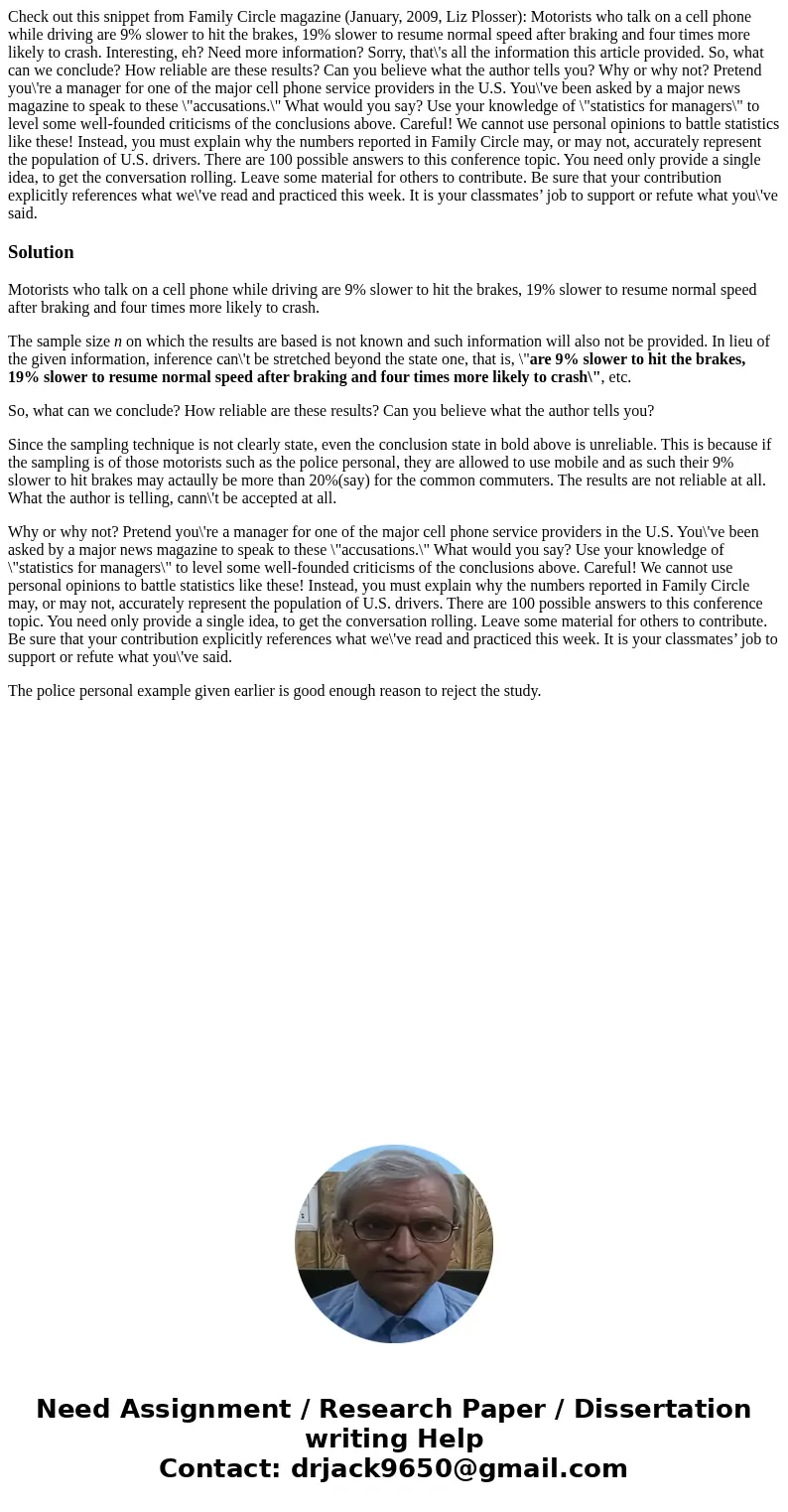Check out this snippet from Family Circle magazine January 2
Check out this snippet from Family Circle magazine (January, 2009, Liz Plosser): Motorists who talk on a cell phone while driving are 9% slower to hit the brakes, 19% slower to resume normal speed after braking and four times more likely to crash. Interesting, eh? Need more information? Sorry, that\'s all the information this article provided. So, what can we conclude? How reliable are these results? Can you believe what the author tells you? Why or why not? Pretend you\'re a manager for one of the major cell phone service providers in the U.S. You\'ve been asked by a major news magazine to speak to these \"accusations.\" What would you say? Use your knowledge of \"statistics for managers\" to level some well-founded criticisms of the conclusions above. Careful! We cannot use personal opinions to battle statistics like these! Instead, you must explain why the numbers reported in Family Circle may, or may not, accurately represent the population of U.S. drivers. There are 100 possible answers to this conference topic. You need only provide a single idea, to get the conversation rolling. Leave some material for others to contribute. Be sure that your contribution explicitly references what we\'ve read and practiced this week. It is your classmates’ job to support or refute what you\'ve said.
Solution
Motorists who talk on a cell phone while driving are 9% slower to hit the brakes, 19% slower to resume normal speed after braking and four times more likely to crash.
The sample size n on which the results are based is not known and such information will also not be provided. In lieu of the given information, inference can\'t be stretched beyond the state one, that is, \"are 9% slower to hit the brakes, 19% slower to resume normal speed after braking and four times more likely to crash\", etc.
So, what can we conclude? How reliable are these results? Can you believe what the author tells you?
Since the sampling technique is not clearly state, even the conclusion state in bold above is unreliable. This is because if the sampling is of those motorists such as the police personal, they are allowed to use mobile and as such their 9% slower to hit brakes may actaully be more than 20%(say) for the common commuters. The results are not reliable at all. What the author is telling, cann\'t be accepted at all.
Why or why not? Pretend you\'re a manager for one of the major cell phone service providers in the U.S. You\'ve been asked by a major news magazine to speak to these \"accusations.\" What would you say? Use your knowledge of \"statistics for managers\" to level some well-founded criticisms of the conclusions above. Careful! We cannot use personal opinions to battle statistics like these! Instead, you must explain why the numbers reported in Family Circle may, or may not, accurately represent the population of U.S. drivers. There are 100 possible answers to this conference topic. You need only provide a single idea, to get the conversation rolling. Leave some material for others to contribute. Be sure that your contribution explicitly references what we\'ve read and practiced this week. It is your classmates’ job to support or refute what you\'ve said.
The police personal example given earlier is good enough reason to reject the study.

 Homework Sourse
Homework Sourse